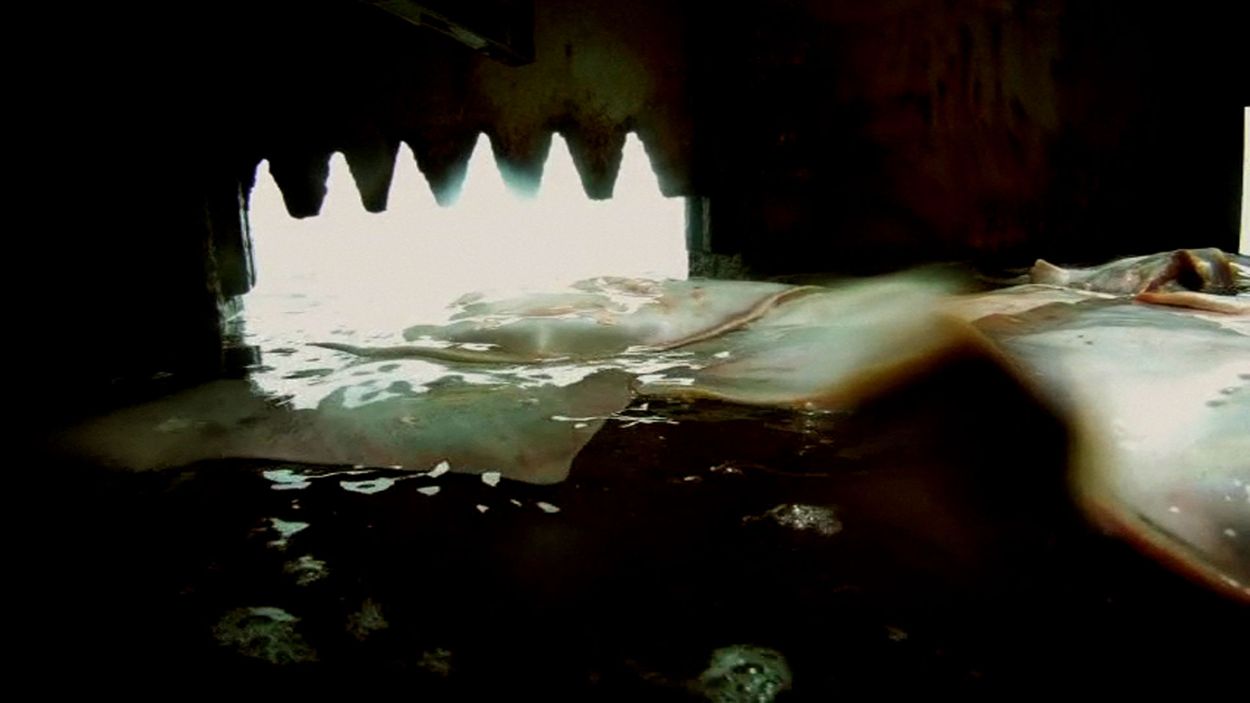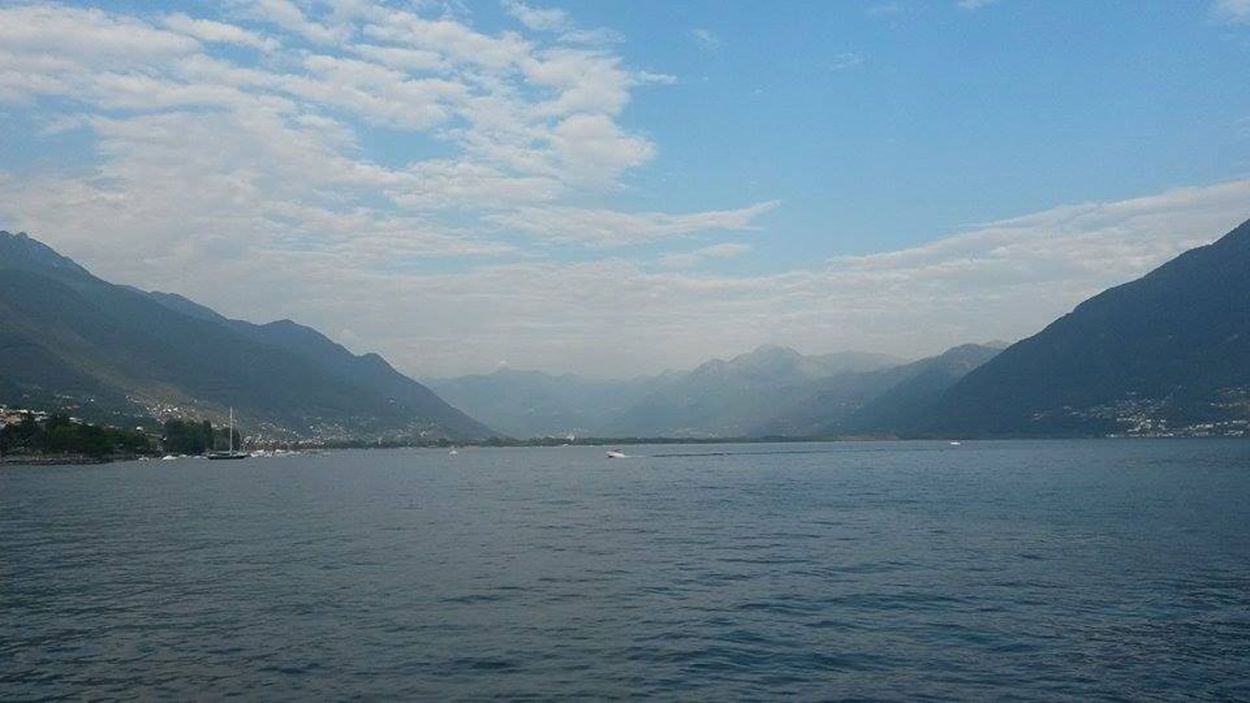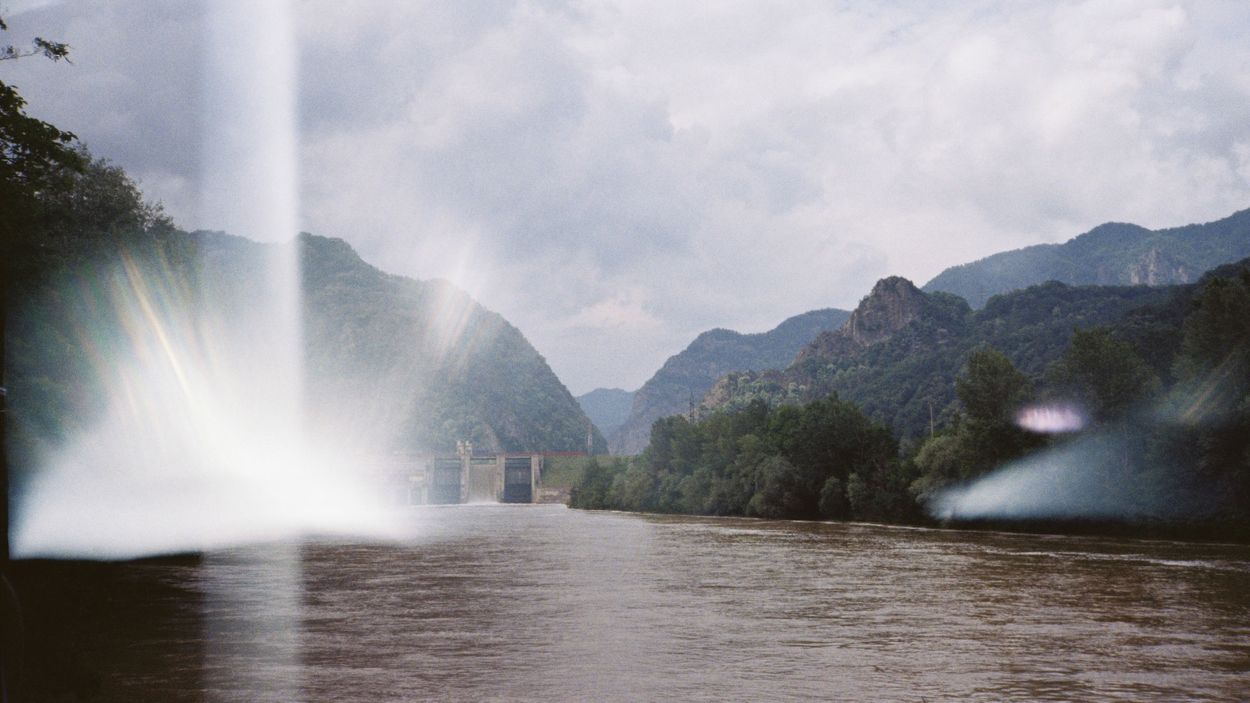Coming Home Again
By Andreea Patru


Andreea Patru is a Romanian film critic and programmer who resides in Spain. Her writing has appeared in Senses of Cinema, Kinoscope, Indiewire and Vague Visages. She is a programmer at Tenerife Shorts – La Laguna International Film Festival and is a member of the selection committees of Las Palmas de Gran Canaria International Film Festival and Valladolid International Film Festival. She has previously worked for Romanian Film Promotion.

The small apartment of my lockdown has a three compass-point orientation, rendering the island of Tenerife in a panoramic view. From this lighthouse, the weight of the world seems manageable. Birds chirping I have never heard before, enjoying their newly regained hold over the world. Yet I can hardly get out of bed to type. Every time I try to concentrate, my mind glides over the smooth surface of a slide and out of reach. The silent, motionless surroundings are an unwelcome reminder of the paradigm shift of over-articulate social beings into their hibernation. I’m spending this quarantine far away from my loved ones. Yet wherever I have been, it felt like I would be sitting under the same bell jar, in the spirit of Esther’s existential numbness in Sylvia Plath’s homonymous book. I’ve always thought of drowning as a descent of the said bell jar, with the water suspended above my head. A perfectly transparent habitat, being observed by sea creatures like a curious intruder in a perfectly harmonious environment.
I was floating above my bed
Like a body in a river, in a car
And the only sound in my head
Was a dying cricket in a jar
– Dead Man’s Bones, Flowers Grow Out of My Grave
Every time I open my laptop, anxiety pulls me back. Conversations increasingly need bridging or platforms to happen. 5096 kilometres separate me from New Bedford, Massachusetts, on the other side of the Atlantic. It’s the former whaling harbour from which Véréna Paravel and Lucien Castaing-Taylor departed to film their iconic Leviathan and where Herman Melville’s Ishmael sailed on his voyage to hunt Moby-Dick. In Tenerife, the seascape of black shores made up of volcanic sediments overwhelms me. There’s no gradual getting into the water, and I instantly submerge into the chasm like I am being baptised in blackness. I fear that if my muscles betray me and I go down, no rescuer could save me from this unsettling abyss. It’s like falling overboard from Leviathan’s fishing trawler into the endless night. Waves are swirling and slapping my face as I gargle more water than I can handle, claiming my body as it invades my orifices. A light touch makes me twitch in anguish—my struggle may attract beasts that could swallow me whole. The lack of ground under my feet awakens my senses in a somatic overflow one can achieve only by near-death experience. Who’s the fish now?
The film emerges from a black screen at the beginning, sound preceding the image. Indistinguishable splashes of colour appear from the darkin what looks like an amateur handheld camera movement. Funny how, in digital photography, noise is the term to describe distortion that comes from shooting in low light. Designed by Ernst Karel, the aural spectrum is diegetic, varying from the ocean’s natural elements – waves crashing, the wind blowing – to the more industrial, rusty hoists squeaking and creaking under the weight of fish pulled out of water. Sound not just accompanies the image, but in the hierarchy of senses, I hear before I see. The same device closes the film in full circle, with the image fading while the sound carries on to extend the sonic hallucination beyond what the camera can capture.

While the photography narrows down the experience with its tight shots, sound amplifies it. In what could be a moment of solace in one of the few scenes depicting a human presence aboard, water dripping from the body of a man showering is soon replaced by the background layer of underwater effect. I can hardly understand what the boatmen say as distorted words seem more alien than the amplified wind above the ocean surface. Here, traditional, tiered sound design that privileges human voice above other elements is reversed. The continuous rumbling and chopping marine creatures overtake speaking as men act together like a perfectly synchronised apparatus. Beheaded fish return to the sea while other unknowing creatures bump into each other, gasping for air. The deck is rinsed off before the fishing net is emptied into the Leviathan’s womb and we can start all over again.
If you can barely stand this hullabaloo, wait until we get under the sea. Sounds appear louder due to water density. The GoPro plunging sound reverberates as it submerges to register red starfish and debris coming off the vessel walls. To me, it looks like an aquatic starry sky. It’s a serene, unsettling image, the kind you’d want to see before you finally surrender to the ocean. The shadows of seagulls lurking around look like a bad omen, you are at the mercy of the avenging forces of nature with an albatross around your neck like in Samuel Coleridge’ nightmarish The Rime of the Ancient Mariner. Then there’s this magical shot where the perspective is inverted and the avid seagulls that darkened the sky stalking the ship seem to appear underneath it. It’s the perfect metaphor for a world turned upside down. The camera rolls over, and we return to the normal we’re accustomed to. Then it sinks again. Curious what a small gimmick like a camera upside down and asynchronous sound can do. With this choreography of gravity-defying birds occasionally hitting the camera, unaware of its presence, yet very palpable to the viewer, Véréna Paravel and Lucien Castaing-Taylor introduce us in a realm of the senses.

In He Maketh A Path To Shine After Him; One Would Think The Deep To Be Hoary, the sequences shot underwater are projected at 1/50 of the speed at which they were recorded, slowing the movement and therefore freezing in time the spectral forms that perished so quickly into the darkness of Leviathan. Blurred greys and silver forms fade into black evoking William Turner’s atmospheric paintings depicting sea-motion. About his Snow Storm: Steam-Boat off a Harbour's Mouth, Turner said he was lashed to the mast for four hours in order to be able to observe it. He got the overview of it – in a similar modus operandi – Paravel and Castaing-Taylor experienced the foamy waves up close. While the images they produce retain the texture and strokes of a painting, Leviathan eschews Romanticism, as the violence of being at sea prevails. As most of the shots were taken by attaching small cameras to the fishermen at lower viewpoints than your typical shoulder-mounted framing, filming literally became an extension of their bodies and audiovisual faculties in McLuhan’s understanding of medium. Though we barely spot the humans operating the ship, their bodily response to the surroundings unintentionally determines framing, pushing the limits of representation. The camera is not only an augmentation of the eyes of its bearer, but of hands performing a triage on sea creatures.
In continuation to the idea of the body as a canvas for the medium, Somniloquies portrays sleeping nudes against the background of the audio archive of Mike Barr who recorded his roommate’s Dion McGregor’s sleep talking for several years. Vulnerable bodies are exposed as the camera lingers over their most intimate parts. Every now and then limbs emerge from the black, backs curl in a foetal position. No bed can be identified, people seem suspended, as if they are sleeping in a non-place. This is how I imagine Jonah in the belly of the Leviathan. It recalls Apichatpong Weerasethakul’s installation Sleepcinemahotel where the guests who have booked a bed are invited to surrender themselves to a site where films permeate dreams. Sleeping is devoid of intimacy and experiencing a film in togetherness is encouraged in the slipstream of unconsciousness as well as in wakefulness. In a similar act of trust, Paravel and Castaing-Taylor’s subjects give up control over their bodies to the camera, unable to perform a socially accepted role. Most of the time, their parts are unrecognisable, out of focus and uncomfortably close, as if the camera intends to pierce flesh. As if dreams could be recorded from our insides as well. In the presentation of their incomplete feature, De Humani Corporis Fabrica, competing in Locarno’s initiative The Films After Tomorrow, Véréna and Lucien talk about a gaze inwards that they want to find some form for perceiving the human body. I wonder what they’ll discover. While many dreams are entertaining and eloquent in their reasoning – if there is one in dreams – the ones that best satisfy my voyeuristic curiosity are the unintelligible ones. I try to find similarities to familiar phonetics, fantasise about nightmarish encounters or repressed emotions. Then even the familiar turns unfamiliar.
Ever since I began writing in a language besides my own, I struggled with the reduction of my possibilities of expression. To translate an image into words meant to abstract my knowledge, to get to the point. For years now, I verbalise my existence interlingually. English is for writing, Spanish is for the mundane and Romanian for the soul. To commit to a borderless living means to embrace the awkward silences and the filler platitudes in search for the perfect terminology. In the process of coding and decoding my thoughts into language, I pull myself apart twice by wanting to please, to perform, all while staying true to myself. As Cioran once stated that “One does not inhabit a country; one inhabits a language”, I put myself on hold before saying something which might come across as offensive.

e, r, t, y, u, i, or the sounds of my confinement from the world before we were even officially locked down. The failure of my keyboard is a symbolic manifestation of my impotence to express myself for the last months. Everything I wanted to say feels narrow once it’s out there, as words I put together lose their aura in a Benjaminian sense. As soon as I start writing, my fingers go numb. I distract myself with tasks that can be easily postponed. Messenger irritates me as I know my answers won’t be short, nor easy. I tell myself I don’t have time. If I admit to Ranciere’s view on film criticism as an expression of subjectivity, prioritising my experience, then my failure lies in how I position myself towards the world. e, r, t, y, u, i – or the distance between me and myself. As I gorge on information about the pandemic, words devoid of sense like asymptomatic and social distancing come up. What is the reality behind this Newspeak and Doublethink? Is it possible Wittgenstein was wrong and my language isn’t the limit to my world?
I’ve been thinking a lot why I decided to revisit Leviathan on this occasion. It’s a film that completely denies the pressure of efficiency, historical time that situates the subject on a progressive path that evolves from one point to another. To the demands that I use my time wisely during this shutdown, Paravel and Castaing-Taylor respond with an invitation to re-imagine pace. In accordance with Deleuze’s theory of “time-image”, movement subordinates itself to time, complementing our experience. Without any visible temporal markers as most of its duration takes place by night, a great deal of time looks in Leviathan as if it was filmed in a single shot, part of a flux. While some events play in real time, elongating our perception, others escape our experience, condensing the constant movement and overtaking space. The ability of the carefully composed, even subtle montage to seize my sensory faculties into an ongoing stream of transcendent energies strikes me as soothing. The rhythm between cuts lasting more than a couple of minutes demands I acknowledge motion in a primal, prelinguistic fashion. Being flooded in this suspended time, I resort to happy memories. I browse through photos and pause over a landscape I took of the Lake Maggiore on my way to Locarno. By coincidence, another waterfront image follows. It is the River Olt passing through the mountains near Cozia. It is a place I hold dear to my heart as I grew up nearby. Maybe if I look long enough, I can make them last. Sensory time is like coming home again.
